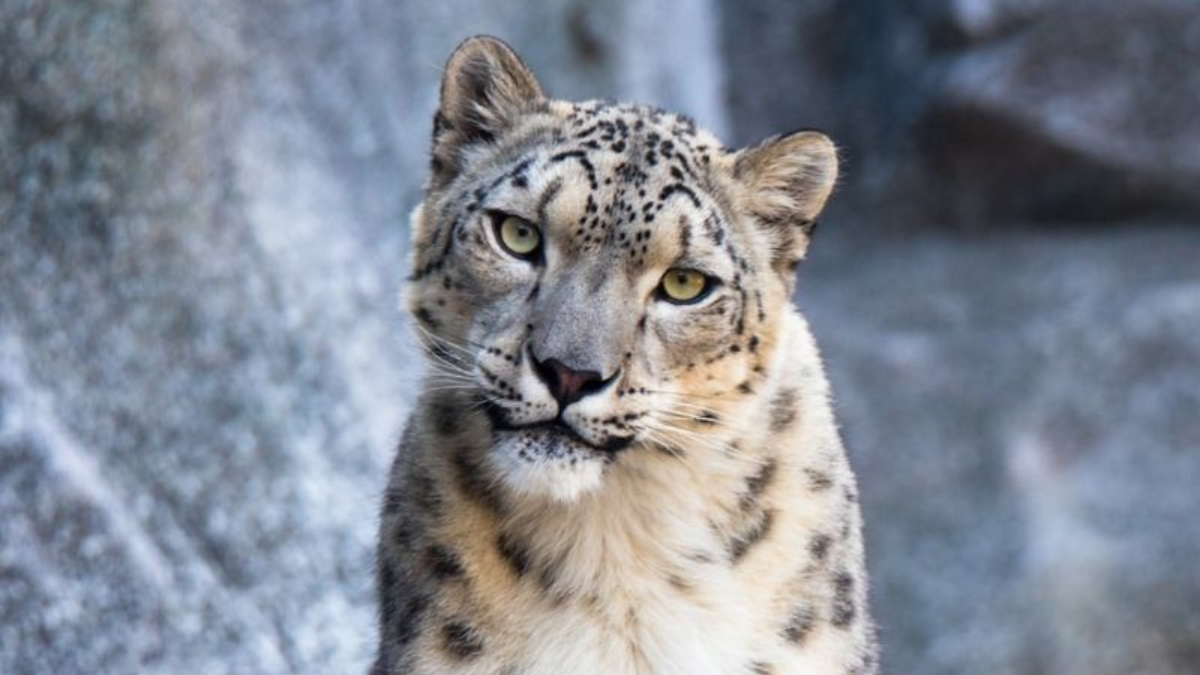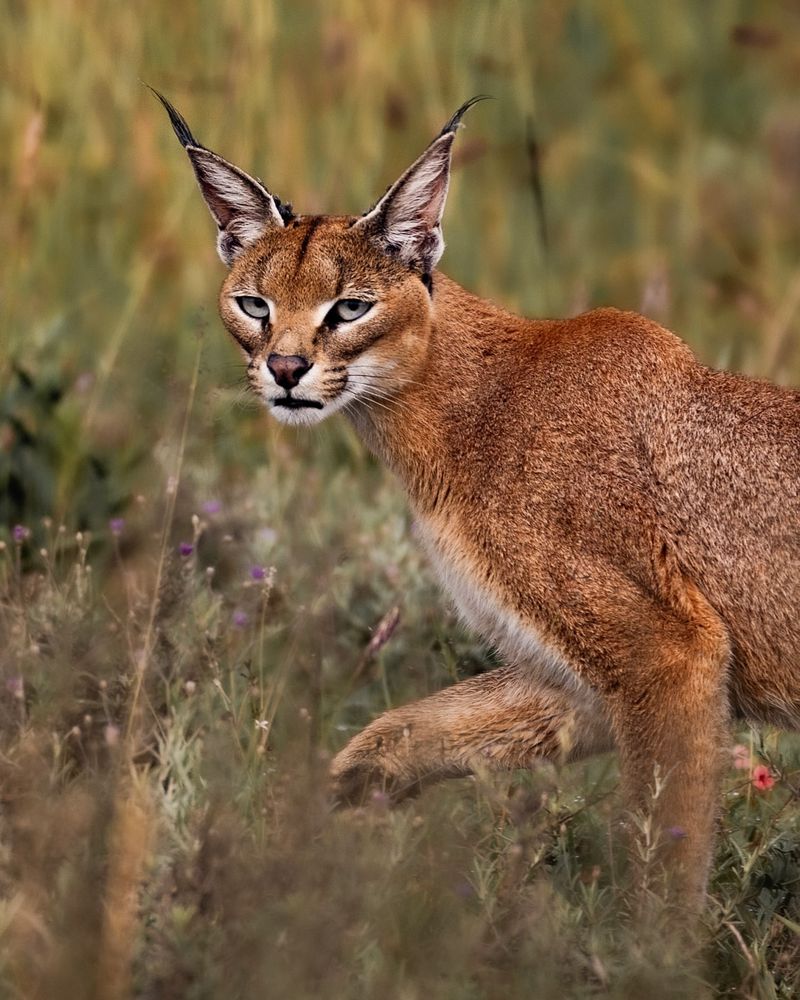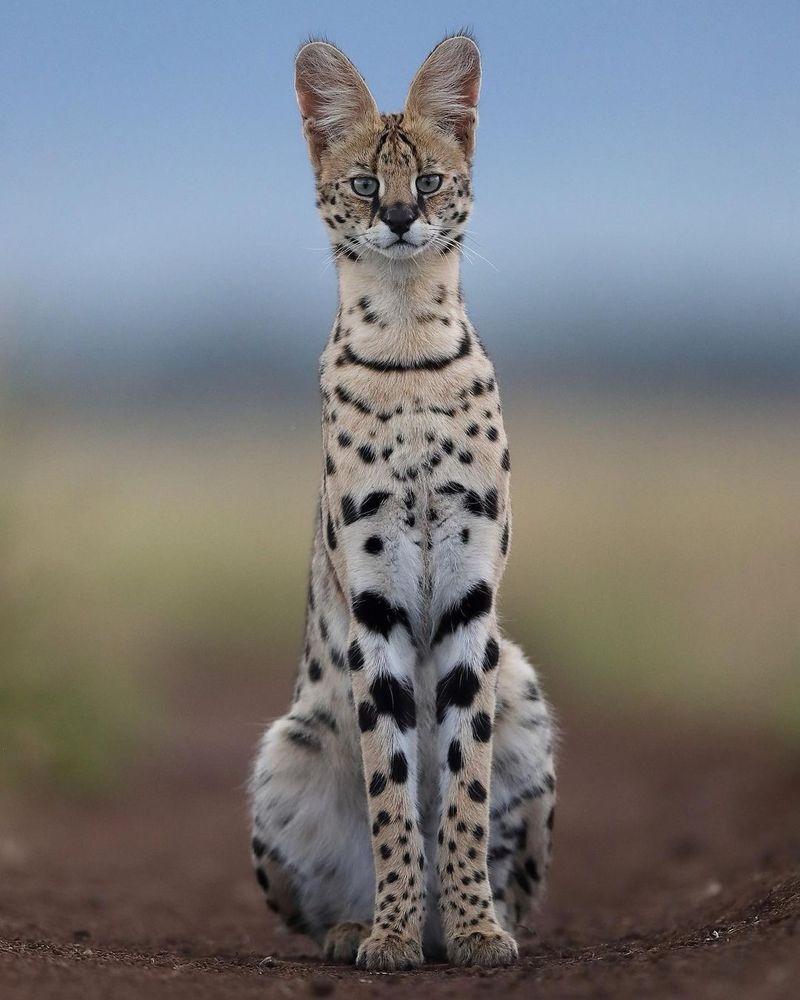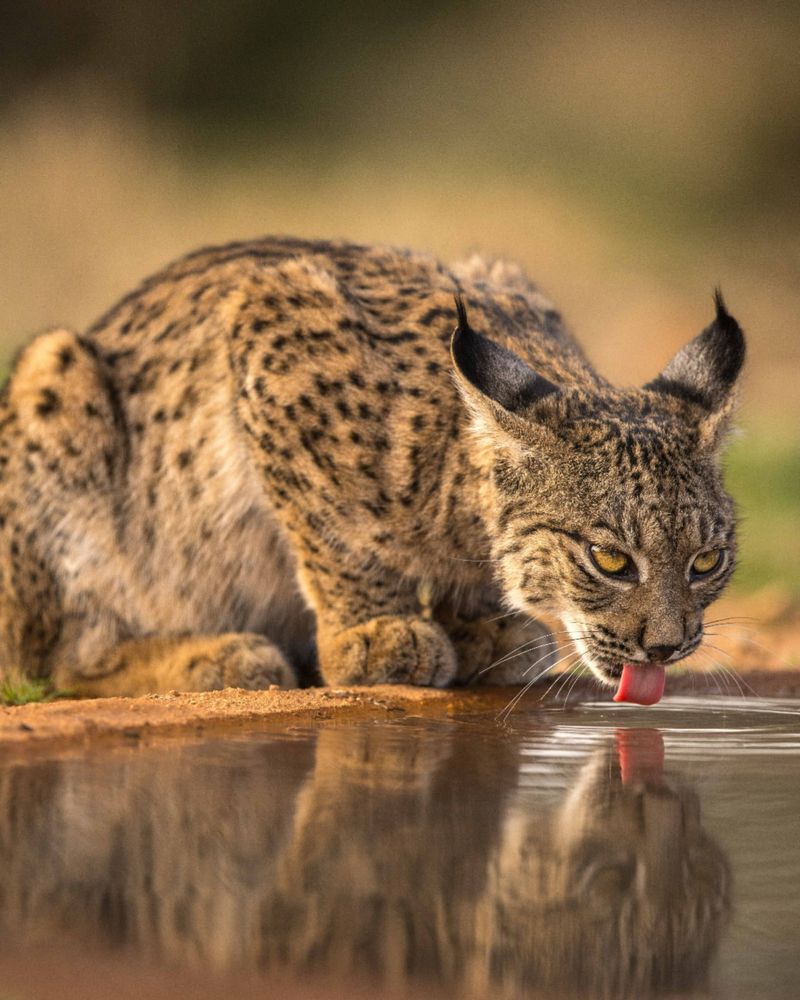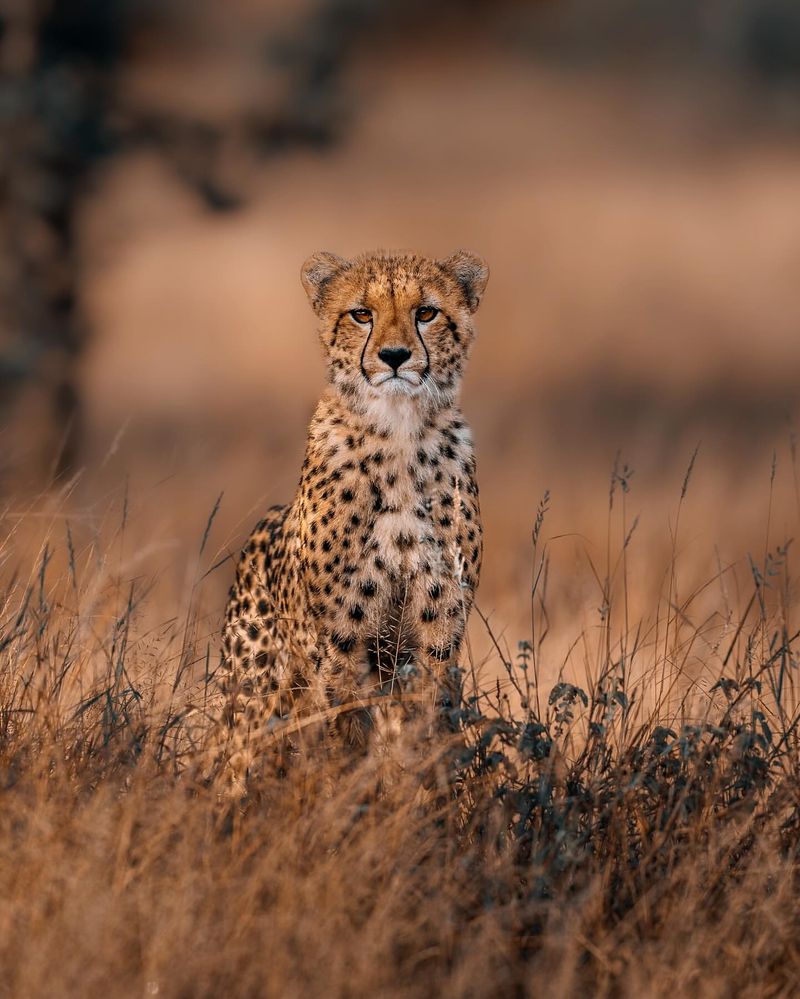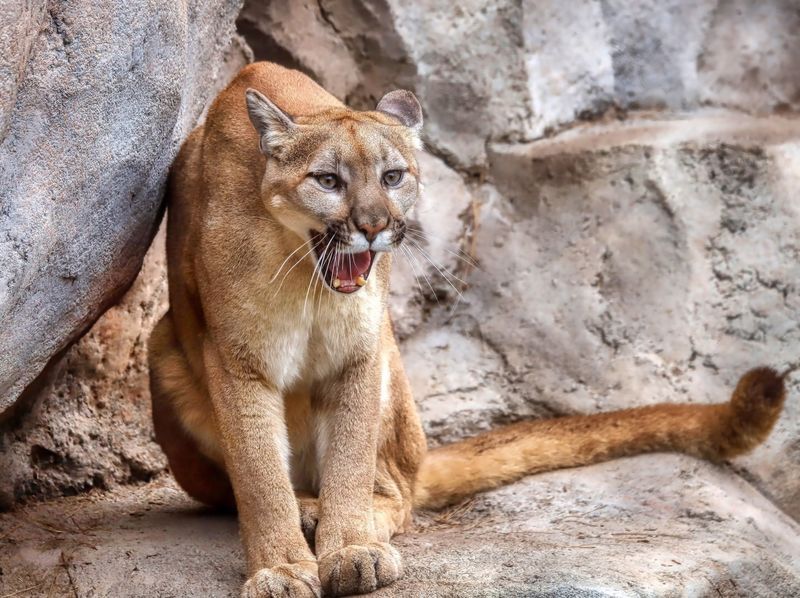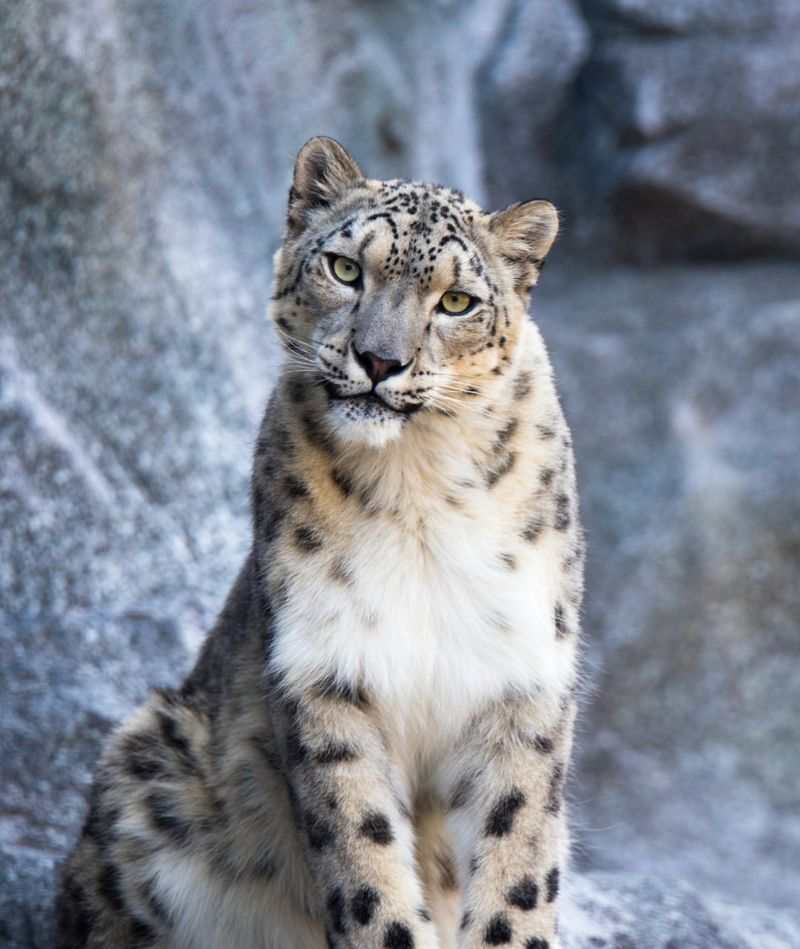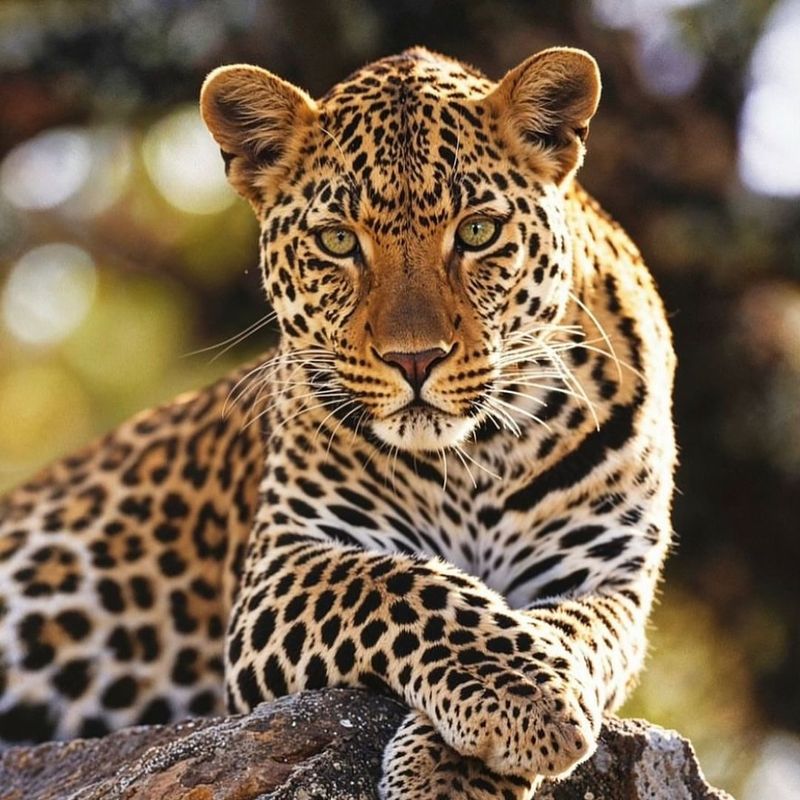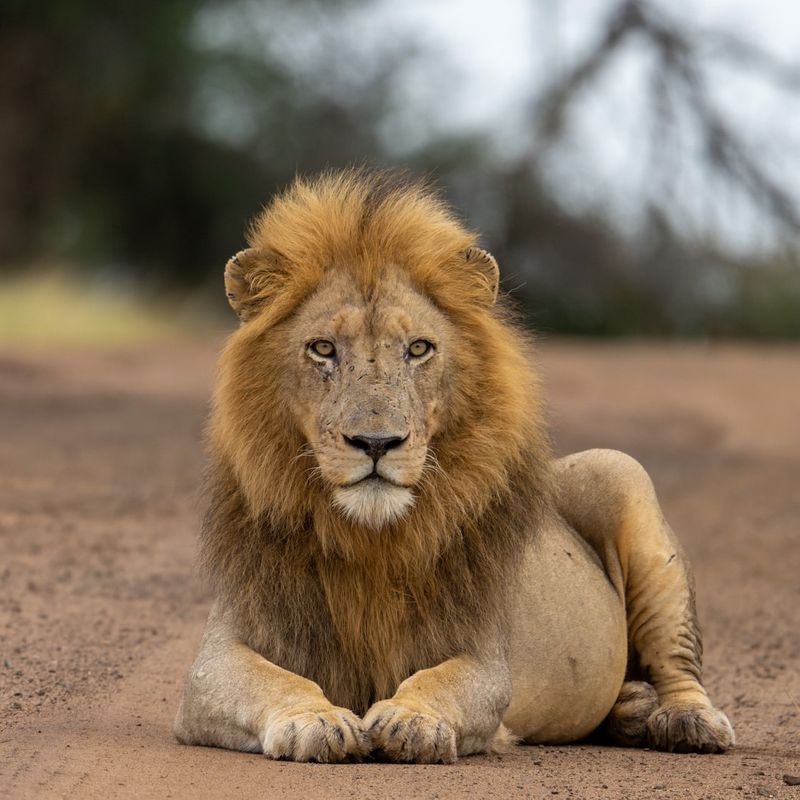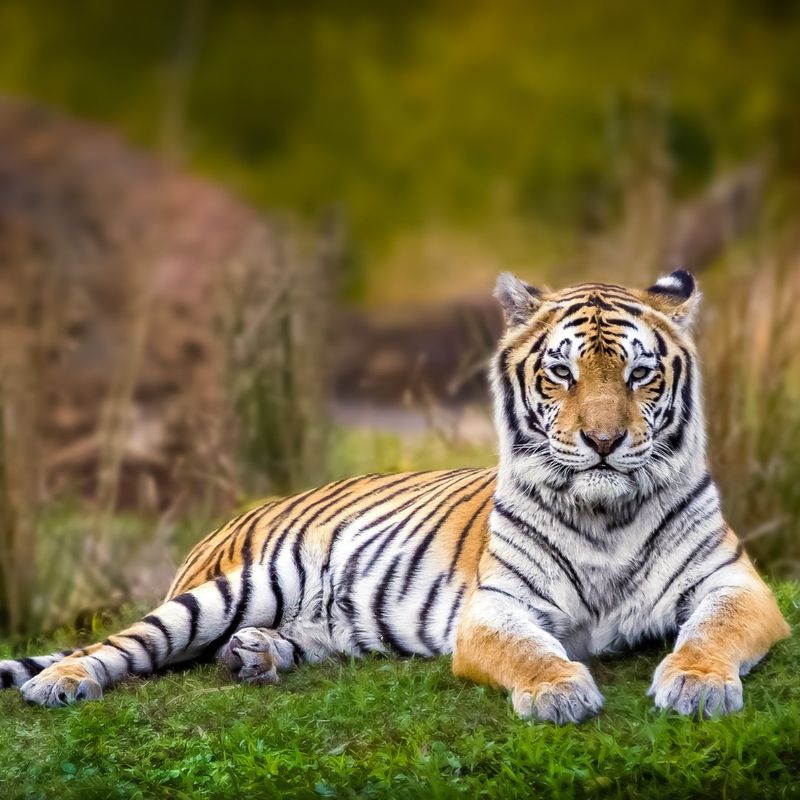📖 Table of Content:
Cats are often seen as fluffy companions, curling up on laps and chasing after toy mice. But not all cats are the purring cuddle machines we know at home.
In the wild, some feline predators are master hunters, fearsome fighters, and downright lethal. These aren’t your neighborhood tabbies—they’re apex predators with razor-sharp claws, lightning speed, and instincts honed to perfection.
From stealthy jungle stalkers to power-packed mountain dwellers, these cats don’t just dominate their habitats—they define them.
Whether you’re curious about the sheer power of a tiger or the surprising aggression of a smaller feline, this list unveils the deadliest members of the cat family that you’d never want to meet on a dark trail.
10. Caracal
The caracal, often referred to as the “desert lynx,” is a medium-sized wildcat found in Africa, the Middle East, and parts of Asia. Known for its agility and acrobatic hunting skills, the caracal can leap over 10 feet into the air to catch birds on the wing.
Caracals have a distinctive appearance, with long tufted ears and a sleek, muscular body. Their diet is varied, including birds, rodents, and small mammals, which they hunt primarily at night.
Caracals are adaptable but face challenges from habitat loss and human-wildlife conflict. Conservation efforts focus on habitat preservation and reducing illegal hunting. The caracal’s unique appearance and hunting prowess make it a captivating part of the wildcat family.
9. Serval
The serval is a medium-sized cat native to Africa, known for its long legs and large ears. These adaptations make it an excellent hunter, capable of detecting prey even in dense grass.
Servals have a unique hunting style, using their long legs to pounce on prey with remarkable accuracy. Their diet includes rodents, birds, and insects, providing a crucial service by controlling pest populations.
Despite their adaptability, servals face threats from habitat destruction and illegal pet trade. Conservation programs work to protect their natural environments and promote awareness. The serval’s graceful movements and hunting efficiency make it a fascinating subject of study and observation.
8. Lynx
Lynxes are medium-sized wildcats found in the forests of Europe, Asia, and North America. Recognizable by their tufted ears and short tails, lynxes are skilled hunters adapted to cold, forested environments.
Lynxes prefer to hunt in the twilight hours, relying on their keen vision and hearing to locate prey. Their diet includes small mammals and birds, which they catch with swift precision. Lynxes are solitary animals, marking large territories to avoid competition.
Although lynxes are not as threatened as some big cats, they still face dangers from habitat loss and hunting. Conservation efforts aim to monitor populations and ensure sustainable habitats. These mysterious cats continue to intrigue researchers and nature enthusiasts alike.
7. Cheetah
Famed for its unparalleled speed, the cheetah is the fastest land animal, capable of reaching speeds up to 60-70 mph in short bursts. Found in sub-Saharan Africa, cheetahs are built for sprinting with slender bodies, long legs, and a specialized spine.
Unlike other big cats, cheetahs rely on sight and speed to catch prey during daylight. Their diet primarily consists of small to medium-sized ungulates. Cheetahs are not strong fighters and often lose their kills to larger predators.
Cheetahs face threats from habitat loss and competition with other predators. Conservation programs focus on habitat preservation and reducing human-wildlife conflict. The cheetah’s grace and agility make it a captivating icon of the African wilderness.
6. Cougar
Also known as the mountain lion, the cougar is a formidable predator found across the Americas. Its adaptability to various environments, from forests to deserts, makes it one of the most widespread big cats.
Cougars are solitary and highly territorial, relying on stealth and speed to ambush prey. Their diet is varied, including deer, elk, and smaller mammals. They are known for their incredible leaping ability, able to jump considerable distances with ease.
As human encroachment increases, cougars face challenges from habitat fragmentation and hunting. Conservation efforts focus on ensuring safe habitats and reducing conflicts with humans. The cougar’s elusive nature and prowess make it a fascinating subject of study and admiration.
5. Leopard
Leopards are among the most adaptable big cats, found in a variety of habitats across Africa and Asia. Known for their incredible agility and strength, leopards are solitary hunters with a diverse diet that includes antelope, deer, and smaller mammals.
Their spotted coat provides excellent camouflage, allowing them to stalk prey with stealth and precision. Leopards are also skilled climbers, often dragging their kills into trees to avoid scavengers.
Despite their adaptability, leopards face threats from habitat loss and human-wildlife conflict. Conservation efforts aim to protect these versatile predators and their habitats. Leopards play a crucial role in maintaining the ecological balance by controlling prey populations and supporting biodiversity.
4. Snow Leopard
Snow leopards, often called “ghosts of the mountains,” are elusive and rarely seen in the wild. Inhabiting the rugged terrains of Central Asia, they have evolved to thrive in cold, mountainous environments. Their thick, long fur and powerful build help them navigate the harsh climate.
These solitary cats are exceptional climbers, using their long tails for balance on steep slopes. Their prey includes mountain goats and sheep, which they hunt with surprising stealth and precision.
Snow leopards face threats from poaching and habitat loss, leading to their vulnerable status. Conservation programs focus on securing their habitats and reducing human conflict. The snow leopard’s mysterious nature and stunning beauty continue to captivate those who are lucky enough to encounter them.
3. Jaguar
The jaguar, native to the dense rainforests of South and Central America, is renowned for its powerful build and beautiful spotted coat. It is the largest cat in the Americas and possesses a bite so strong it can pierce turtle shells.
Jaguars are solitary creatures, prowling silently through the forest with unmatched agility. Their hunting prowess is enhanced by their ability to swim, allowing them to hunt both on land and in water.
Threatened by habitat destruction and poaching, jaguars are a focus of numerous conservation initiatives. These efforts are vital to preserving their population and the biodiversity of their habitats. The jaguar holds a special place in the cultures of the region, often revered as a symbol of strength and mystique.
2. African Lion
Known as the “King of the Jungle,” the African lion is a powerful symbol of strength and bravery. These social cats live in prides and are found primarily in the grasslands of Sub-Saharan Africa. Male lions are known for their impressive manes, which serve as a sign of dominance and attract mates.
Lions are apex predators, relying on teamwork to take down large prey such as zebras and buffaloes. Their roar can be heard from miles away, signaling both dominance and a warning to intruders.
Despite their fearsome reputation, lions face significant threats from habitat loss and human conflict. Conservation efforts aim to protect these majestic creatures and ensure their survival for future generations. Their presence is crucial in maintaining the ecological balance of their environment.
1. Bengal Tiger
The Bengal tiger, native to the Indian subcontinent, is one of the largest and most powerful cats in the world. Its immense size and strength make it a top predator, capable of taking down prey many times its size. Despite their beauty, these tigers are solitary hunters and fiercely territorial.
Living in lush, dense forests, Bengal tigers have adapted well to a variety of habitats, from mangroves to grasslands. This adaptability contributes to their success as hunters. They have a keen sense of hearing and sight, which aids them in stalking their prey.
Bengal tigers are endangered, with conservation efforts in place to protect their dwindling numbers. Their fearsome reputation is matched by their critical role in the ecosystem, maintaining the balance of their natural habitats.
